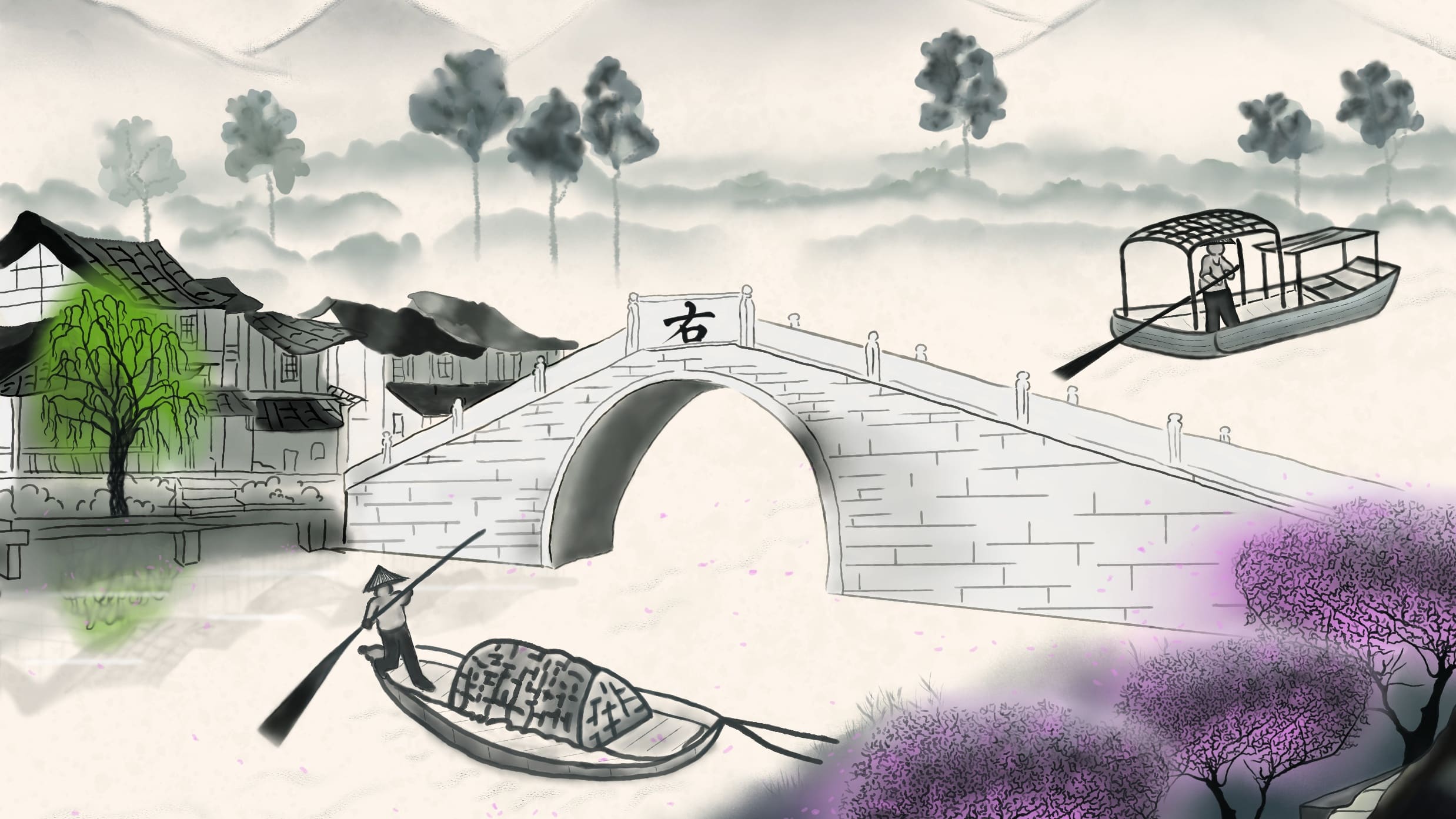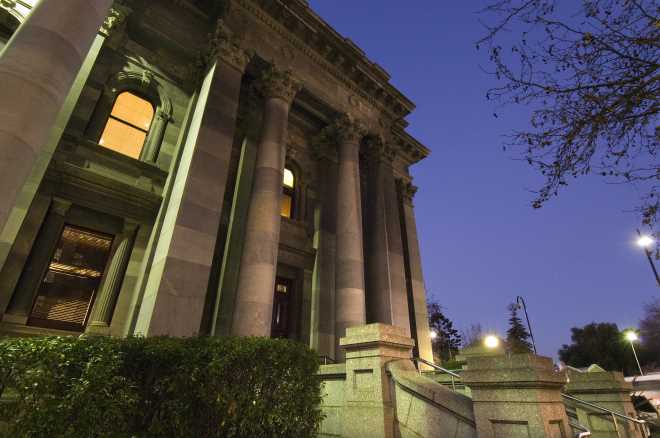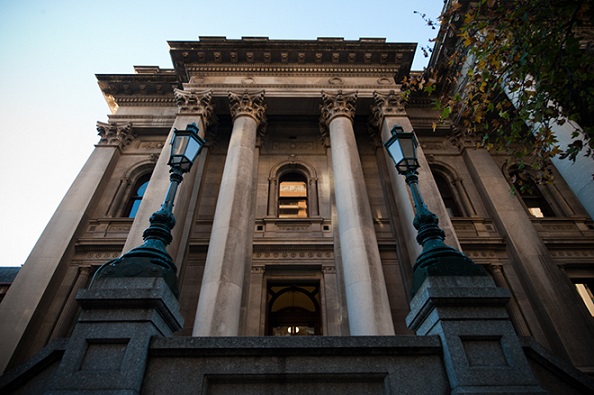It’s National Volunteer Week, and we’re thrilled for the opportunity to showcase some of our champion changemakers. Get ready to meet two dynamic duos whose passion for conservation knows no bounds. With their dedication and tireless efforts, Judy and Ken Boyle, and Caro Letts and Mike Hall, have become invaluable members of our team, making a significant difference in preserving Australia’s precious ecosystems.
Judy and Ken
 A Ross/AWC
A Ross/AWCMeet Judy and Ken Boyle, two iPad wielding warriors who may be retired, but sure aren’t taking a back seat in life.
The pair have been volunteering for AWC since 2020, caravanning across Australia to support our national botanists, Rigel and Jeanette, in meticulous vegetation surveys.
Since they joined the team, the former teachers have been busy filling their iPads with extensive datasets, mapping the occurrence of flora at Karakamia, Mallee Cliffs, Yookamurra, Mt Gibson and Scotia Wildlife Sanctuary.
Notches in their belts include:
- Assiduously re-tagging all visited vegetation survey sites to ensure future replicability of studies, while also diligently sprucing up herbariums at the sanctuaries they visit.
- Leveraging Judy’s botanical know-how to enhance the knowledge of Mallee Cliffs’ science team during the vegetation survey, thereby significantly augmenting ecologists’ plant identification and management skills.
- Providing invaluable assistance to land management officers by utilising Ken’s toolkit for various tasks such as fencing, drainage, and more.
- Collecting thousands of tree measurement data points for mistletoe research, serving as an ecosystem health monitoring tool and indicating the success of Brushtail possum reintroduction at Mt Gibson.
- Collaborating with scientists at Yookamurra Wildlife Sanctuary to collect vital data confirming the critically endangered Brush-tailed Bettong’s preference for shelter plants. This research enables targeted revegetation efforts to support bettong populations and protect them from predation.
Though they’ve been working hard, they’ve also made time to enjoy the ride, basking in the glory of the wildlife they encounter.
They’re still in awe of the “sheer magnitude” of kangaroo paws and yellow flowers which blanketed Mt Gibson in 2020, they’re always ready to gush at the sudden bursts of colour from Karakamia’s orchids, and they love stumbling across Mallee Eucalypts as “they’ve got such character.” Ken speaks with a quiet reverence when he says, “Because they’re so slow growing, some of them, if they could tell a story, it would be incredible.”
They say their favourite species changes daily and given the great range of flora they’ve worked with, it’s easy to see why.
“It’s just amazing what can be in such a small space,” Judy says.
“The chance of finding things that are perhaps a bit unusual and working out what they are… that’s the part I like the most. In a one square meter quadrat in Karakamia’s wet sclerophyll forest, we once found 32 different plant species.”
Ken smiles drolly. “And you’d only go home with about six ticks each day.”
 A Ross/AWC
A Ross/AWCThis veg super team have had a can-do attitude since day one, tackling Covid-19 border closures, limited reception, and sudden snake cohabitants with grace.
They’ve found the staff’s “lovely” personalities and eccentric cooking keep them happily preoccupied from any “roughing it,” they might need to do. They both look up to Rigel and Jeanette, finding the botanists’ recall of almost any plant in the country astounding.
“We’ve also met some incredibly vivacious, bright young scientific women–they have just been absolutely phenomenal,” Judy says. “It’s just been an absolute joy to see young women being so involved in this sort of work and having opportunities for leadership in these areas.”
They also extend their gratitude to Daniel, Scotia’s Land Management Officer, for his delightful goat curry and rabbit quandong pie, and to “mad dinosaur man” Trevor at Mallee Cliffs, who always has dinosaur lollies to pass around at morning tea.
To those considering volunteering, Judy says, “just do it!” Ken adds, “No matter what your background is, whether you have or haven’t got a trade, there’s something constructive you can do.”
“It gives variety in the year, and that’s good stuff because you’ve always got something look forward to,” Ken says. And, of course, it helps to know that wherever they go, “we’re helping people make a real difference.”
Caro and Mike
 AWC
AWCPicture this: You’re sitting across from two of AWC’s most patient, thoughtful, and eloquent volunteers. Mt Gibson campground managers Caro Letts and Mike Hall are expert listeners, enticing each other to speak at length and showing real interest in each other’s experiences…
That is, until you ask them their favourite animal. You can bet the two retired vets will stumble over each other in their excitement to demonstrate the ‘outlandish’-ness of the bilby, erupting into a series of back-and-forths about its oversized ears, zigzagging gait, and tail puff which would rival a lively game of ping pong. They punctuate their descriptions with synchronous gestures, painting long ears and noses extending off their faces and into the air.
It’s not just the bilby’s curious appearance they love, though. They deeply admire its role as an environmental engineer, tilling soil, creating fertile pockets for plant growth, and constructing burrows which other small mammals share. “They’ve got a protestant upbringing,” Mike jests.
That’s a trait shared by this industrious pair. Mike and Caro have been assisting on sanctuary for seven years now, all while running a feral deer management coalition back home. Their days are mostly spent tackling odd jobs, with the aim to support Mt Gibson Wildlife Sanctuary’s Operations and science teams by freeing up their time for fieldwork.
For them, finding pleasure in tough work comes naturally. Reviewing the sanctuary’s entire 43km feral predator-proof fence for damage at Mt Gibson Wildlife Sanctuary isn’t just a checkmark, it’s an opportunity for outdoor tea and birdwatching. The removal of decrepit fences and broken glass from the property’s pastoral past is an archaeological puzzle–they’ve found bottles dating back to 1853!
 AWC
AWC“Everyone says to us as we head off, oh but you’re going away to do more work,” Caro says. “We say, no, we’re actually going way to have a fantastic holiday, with the added bonus of we’ve achieved stuff at the end of it.”
As volunteers, they say, “everyone seems to find that thing that they’re interested in and then they have the ability to really pursue that.”
Being Mt Gibson’s campground managers, Caro and Mike are the first port of call for visitors, and their curiosity and compassion lends brilliantly to the job.
“Meeting these people is one of the greatest pleasures of our job,” Mike says, “because they’re really, almost invariably interesting.”
Caro agrees emphatically: “We never get bored of hearing about the same experiences, no matter how many times we’re told about visits to Mushroom Rocks, we never get bored hearing about Mushroom Rocks, because everyone’s experiencing them differently.”
One of their most precious memories in this role was guiding Badimia people around the sanctuary.
“There was a group of Indigenous people who’d come here to reconnect with Country because they were from the stolen generation. This was their land, but they’d grown up somewhere else and didn’t know their own Country.” Mike says.
“That was really, that was an incredibly poignant occasion. It was very meaningful, you know, taking them around and watching them reconnect with their Country.”
Caro nods, adding, “In that case it was all about listening.”
The two say they’ve always been interested in issues affecting First Nations people in Australia, and that their time at Mt Gibson and Charnley River Artesian Ranges has been highly valuable for gaining greater insights, allowing them to have much more interaction with Indigenous communities than they otherwise would have been able to.
“So these are opportunities that, you know, go to a property, and you’ll sort of think I’m going to be the campground manager. It’s so, so much more.”
 AWC
AWC“From day one, the whole team has welcomed us like old friends, so that every time we come here it feels like we’re coming home.”
Mike and Caro share a smile.
“Being a volunteer,” Mike says, “it sort of recentres your soul.”
Whether that’s the “spine tingling” experience of helping the Banded Hare-wallaby return to the mainland for the first time in nearly 120 years, or curbing their maternal instincts on every subsequent encounter (Mike insists “they just look like they need to be cuddled”), the pair “always come away feeling accomplished.”
From a volunteer’s perspective, to feel wanted, to feel needed and appreciated, and to feel that you’re putting in value, they’re critical things.”
Caro’s advice to those considering volunteering is to “enjoy yourself,” as “the more you throw yourself into it, the more you’ll get out of it.”
Clearly, their experience has been testament to their approach.
To Judy, Ken, Caro, Mike, and all our volunteers across the country, we extend our heartfelt gratitude. Volunteers are the beating heart of AWC’s conservation efforts, tirelessly dedicating themselves to protecting Australia’s irreplaceable ecosystems with a spirit of generosity and optimism. Thank you for being invaluable members of our team and for making a real impact in safeguarding Australia’s natural heritage.








